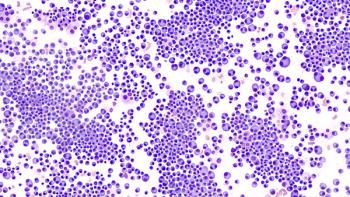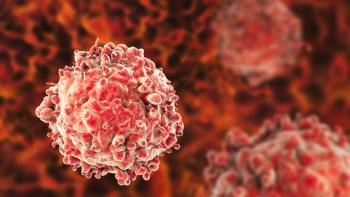
Long-Term Data Support Teclistamab in Relapsed, Refractory Myeloma
Bispecific antibodies like teclistamab offer “more potent” treatment than monoclonal antibodies for patients with relapsed or refractory multiple myeloma.
Bispecific antibodies like teclistamab (Tecvayli) work similarly to CAR T-cell therapies, in that they bring together myeloma cells and the T cells that will destroy them. However, bispecific antibodies are administered subcutaneously and therefore can be given without lymphodepleting regimens, explained Alfred L. Garfall, MD.
Garfall is the director of autologous hematopoietic stem cell transplantation, section chief of Myeloma, Hematology-Oncology and associate professor of Medicine at the Hospital of the University of Pennsylvania. He sat down with Oncology Nursing News at the 2024 American Society of Clinical Oncology Annual Meeting to discuss long-term follow-up from the phase 1/2 MajesTEC-1 clinical trial evaluating teclistamab in patients with relapsed or refractory multiple myeloma.
MajesTEC-1 was the longest follow-up of any bispecific antibody in multiple myeloma. Findings showed that at a median follow-up of 30.4 months, the overall response rate (ORR) was 63%, with 46.1% of patients achieving a complete response (CR) or better.
“Bispecific antibodies are…grabbing with one end of myeloma cell and the other end of the T cell and kind of pulling them together in the body,” Garfall explained in the interview. “And that is a different mechanism of immune activation than we see with conventional monoclonal antibodies like daratumumab [Darzalex], and it's essentially more potent.”
Transcript:
So we can think of bispecific antibodies as working in a similar fashion to CAR T cells. So bispecific antibodies are kind of grabbing with one end the myeloma cell and the other end the T cell and kind of pulling them together in the body. And that is a different mechanism of immune activation than we see with conventional monoclonal antibodies like daratumumab, and it's essentially more potent.
So this is a way to kind of get the same engagement of the T cell arm of the immune system that we're going for with CAR T-cell therapy but with the simplicity of a subcutaneous injection that can be started without the need for all the infrastructure that's required for CAR T-cell therapy, and also without the need for things like lymphodepleting chemotherapy, which is required for CAR T-cell therapy.
Newsletter
Knowledge is power. Don’t miss the most recent breakthroughs in cancer care.
















































































